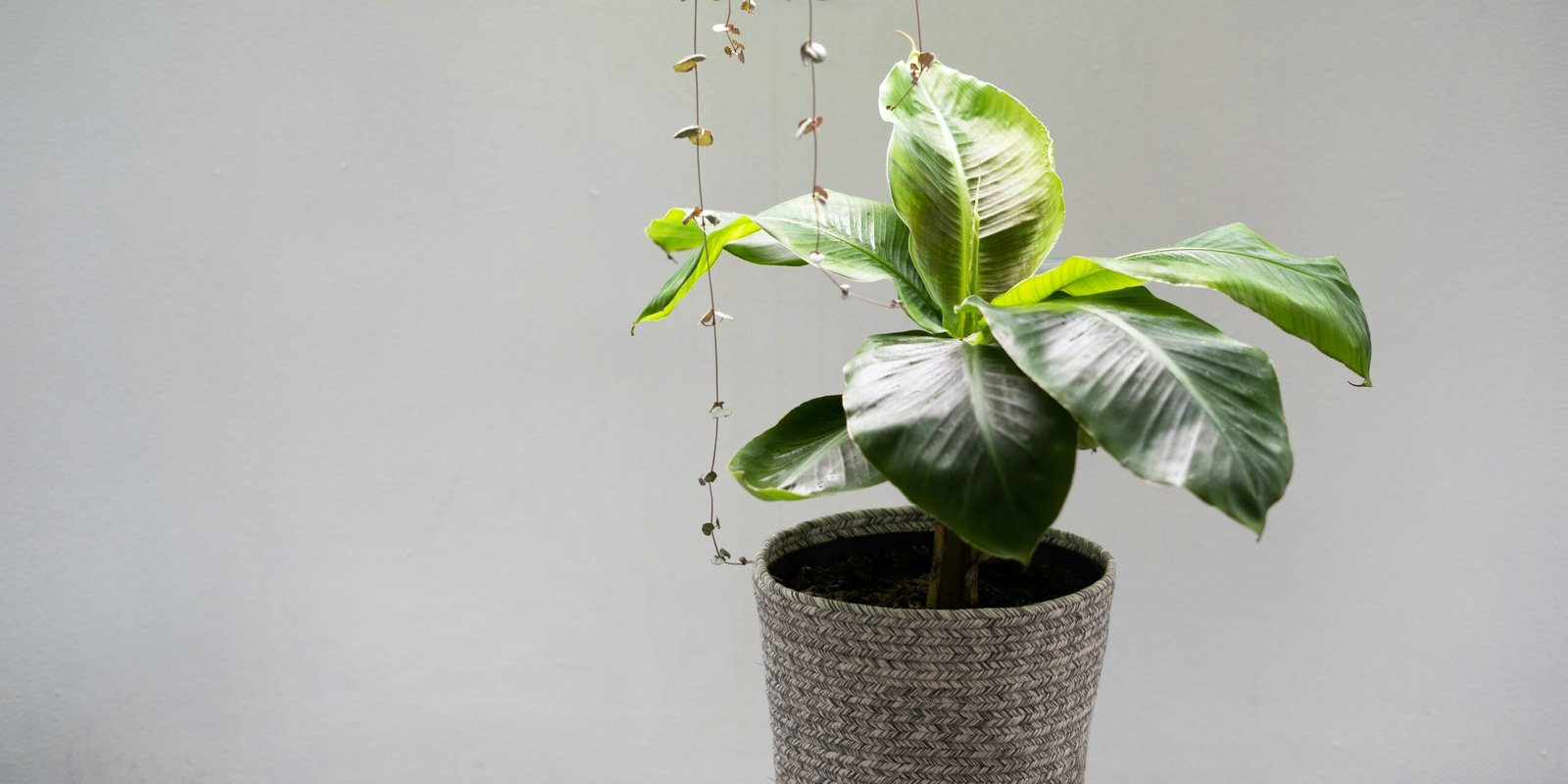The banana plant, also known as Musa, is a large herbaceous plant that belongs to the family Musaceae. It is native to tropical regions and is cultivated for its fruit, which is consumed worldwide. While the fruit of the banana plant is undoubtedly edible and enjoyed by millions of people, the same cannot be said for all parts of the plant.
The most commonly consumed part of the banana plant is, of course, the fruit itself. Bananas are rich in vitamins, minerals, and fiber, making them a healthy and nutritious snack. They can be eaten raw, added to smoothies, used in baking, or even dried and turned into chips. The versatility of bananas is one of the reasons why they are so popular.
However, the fruit is not the only edible part of the banana plant. The flower of the banana plant, known as the banana blossom or banana heart, is also consumed in some cultures. The banana blossom is a large, purple-colored flower that grows at the end of the banana bunch. It has a unique flavor and texture and is often used in salads, curries, and stir-fries.
In addition to the fruit and the flower, certain parts of the banana plant are also used for cooking and medicinal purposes. The young leaves of the plant, for example, are sometimes used as a wrapper for steaming food or as a plate for serving meals. The sap of the banana plant is also used in traditional medicine to treat various ailments, including burns, wounds, and digestive issues.
However, it is important to note that not all parts of the banana plant are edible or safe for consumption. The stem of the plant, for example, is generally not consumed as it is tough and fibrous. The roots of the banana plant are also not edible and can be toxic if ingested. It is always best to stick to the parts of the plant that are known to be safe and edible.
In conclusion, while the banana plant itself is not 100% edible, several parts of it can be consumed and enjoyed. The fruit, flower, and certain other parts of the plant have culinary and medicinal uses, making the banana plant a versatile and valuable crop. So the next time you enjoy a delicious banana, remember that there is more to the banana plant than just its fruit.
Table of Contents
The Edible Parts of a Banana Plant
The banana plant, scientifically known as Musa, is a large herbaceous plant that belongs to the family Musaceae. While the fruit of the banana plant is the most commonly consumed part, there are other parts that are also edible and used in various cuisines around the world.
1. Banana Fruit:
The banana fruit is the most well-known and widely consumed part of the plant. It is rich in essential nutrients such as potassium, vitamin C, and dietary fiber. Bananas are enjoyed in their raw form, added to smoothies, used in baking, or even dried and turned into banana chips.
2. Banana Blossom:
The banana blossom, also known as the banana heart, is the flower of the banana plant. It is used in many Southeast Asian and Indian dishes. The tender inner leaves and florets of the blossom are often cooked and added to curries, salads, or stir-fries. The flavor is slightly bitter, but it adds a unique taste to the dishes.
3. Banana Stem:
The banana stem, also called the banana trunk, is the long, fibrous stalk that connects the roots to the leaves of the plant. It is commonly used in South Indian cuisine, where it is sliced and cooked in various dishes. The banana stem is known for its high fiber content and is believed to have several health benefits, including aiding digestion and promoting weight loss.
4. Banana Leaves:
In addition to the fruit, blossom, and stem, banana leaves are also edible and widely used in many cultures. The large, sturdy leaves are often used as natural wrappers for steaming or grilling food. They impart a subtle, earthy flavor to the dishes and help to keep the food moist and flavorful. Banana leaves are commonly used in dishes such as tamales, wrapped rice, and grilled fish.
5. Banana Seeds:
While not as commonly consumed as the other parts of the banana plant, banana seeds are edible and can be used in certain dishes. They are small, hard, and usually black in color. Banana seeds can be ground into a powder and used as a thickening agent in soups, stews, or smoothies. They can also be roasted and eaten as a snack, similar to sunflower seeds.
6. Banana Flower:
Aside from the blossom, the banana plant also produces a flower that can be eaten. The banana flower, also known as the banana bud, is the unopened bud of the banana blossom. It has a slightly bitter taste and a meaty texture. The banana flower is commonly used in salads, stir-fries, or curries. It is often sliced and soaked in water with lemon juice to prevent discoloration before being cooked.
As you can see, the banana plant offers a variety of edible parts that can be enjoyed in different culinary preparations. From the sweet and creamy fruit to the tender blossoms and fibrous stem, each part brings its own unique flavor and nutritional benefits to the table.
Non-Edible Parts of a Banana Plant
While the edible parts of the banana plant offer a range of culinary possibilities, there are certain parts that are not typically consumed:
1. Banana Leaves:
Although banana leaves are not directly consumed, they play a crucial role in cooking and serving food in many cultures. The large, sturdy leaves are used as natural food wrappers for steaming or grilling. They impart a subtle flavor to the food and help retain moisture during cooking. In addition to their culinary uses, banana leaves have various other applications. In some regions, they are used as eco-friendly plates or bowls, replacing disposable plastic or paper products. The leaves can also be used for decorative purposes, such as table settings or as a backdrop for serving platters.
2. Banana Roots:
The roots of the banana plant are not commonly eaten, as they are tough and fibrous. However, they are sometimes used in traditional medicine for their potential health benefits. Banana root extracts are believed to have antimicrobial and anti-inflammatory properties, but further research is needed to confirm these claims. Apart from their medicinal uses, banana roots have other practical applications as well. The fibers from the roots can be extracted and used for making ropes, baskets, and other handicrafts. In some regions, the roots are also used for dyeing fabrics, creating natural and earthy tones.
3. Banana Stalks:
Another non-edible part of the banana plant is the stalk. While the fruit-bearing part of the stalk is consumed, the rest of the stalk is typically discarded. However, banana stalks have various alternative uses. In some cultures, the inner core of the stalk is used for cooking. It can be sliced, boiled, and added to soups or stir-fries. Additionally, the outer layers of the stalk can be used for composting or as a natural fertilizer for plants. The high potassium content in banana stalks makes them an excellent nutrient source for soil enrichment.
Buying Plants Online from Nursery Kart
If you are looking to buy banana plants or any other plants for your garden, Nursery Kart is a reliable online platform to consider. With a wide range of plants available, Nursery Kart offers convenience and quality at your fingertips. Whether you are a seasoned gardener or a beginner, Nursery Kart provides a user-friendly interface and expert guidance to help you make the right choices for your garden.
When you buy plants online from Nursery Kart, you can expect:
1. Quality Plants:
Nursery Kart ensures that all the plants they offer are of the highest quality. Each plant is carefully selected and nurtured to ensure its health and vitality. This means that you can trust the plants you receive from Nursery Kart to be healthy and ready to thrive in your garden. Additionally, Nursery Kart takes great care in packaging the plants for shipping, using specialized techniques to protect them during transit. This attention to detail ensures that the plants arrive in excellent condition, ready to be planted in your garden.
2. Wide Variety:
Whether you are looking for flowering plants, fruit trees, or medicinal herbs, Nursery Kart has a wide variety of options to choose from. Their extensive collection caters to different preferences and requirements, allowing you to find the perfect plants for your garden. Moreover, Nursery Kart regularly updates their inventory to offer the latest and most popular plant varieties. This means that you can stay up to date with the latest gardening trends and have access to the newest plant introductions.
3. Convenient Delivery:
One of the biggest advantages of buying plants online is the convenience of having them delivered straight to your doorstep. Nursery Kart offers reliable and efficient delivery services, ensuring that your plants reach you in excellent condition and ready to be planted. They work with trusted shipping partners who specialize in handling live plants, ensuring that the plants are carefully transported to minimize any stress or damage. Additionally, Nursery Kart provides tracking information for your order, allowing you to know exactly when to expect the delivery.
4. Expert Advice:
Nursery Kart understands that gardening can be a complex and sometimes daunting task, especially for beginners. That’s why they provide expert advice and guidance to help you make informed decisions about your plants. From choosing the right plants for your garden to providing care tips, Nursery Kart is there to support you every step of the way. Their website features detailed plant descriptions and care instructions, as well as a blog with informative articles on various gardening topics. Furthermore, Nursery Kart has a dedicated customer support team that is available to answer any questions or concerns you may have.
So, if you are considering buying plants online, Nursery Kart is a trustworthy option that offers quality, variety, and convenience. Visit their website at www.nurserykart.in to explore their collection and start creating your dream garden today. With Nursery Kart, you can be confident in the quality of the plants you receive and enjoy the convenience of having them delivered right to your doorstep.


